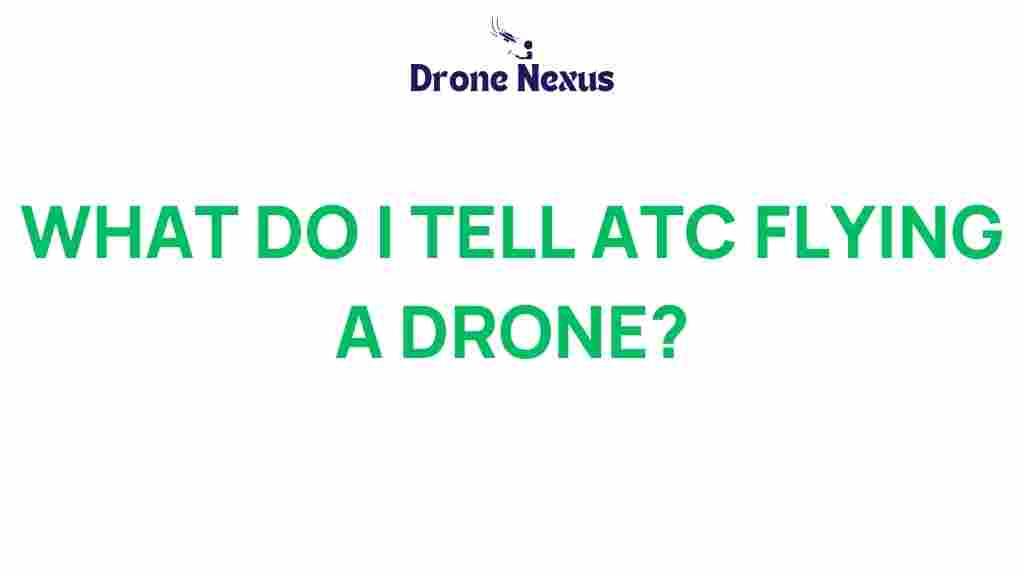Drone Communication: Navigating the Skies
As the use of drones becomes increasingly popular for recreational and commercial purposes, understanding how to communicate effectively with Air Traffic Control (ATC) is crucial for ensuring safety in the skies. Drone communication is a vital aspect of operating unmanned aerial vehicles (UAVs) in controlled airspace. This article will guide you through the essential aspects of communicating with ATC while flying drones, including what to say, when to say it, and how to troubleshoot common issues.
Understanding Drone Communication with ATC
Effective drone communication can prevent accidents and ensure compliance with regulations. Below are the key components of drone communication:
- Know Your Airspace: Before you launch your drone, familiarize yourself with the airspace classifications. Drones often operate in Class G airspace, but entering controlled airspace requires ATC communication.
- Register Your Drone: Ensure your drone is registered with the appropriate authorities. This adds credibility during communication with ATC.
- Understand the Regulations: Stay updated on local and federal regulations regarding drone usage to ensure you’re compliant.
The Importance of Communication
Proper drone communication with ATC is not just about following legal requirements; it is also about ensuring safety for both drone operators and manned aircraft. Effective communication helps ATC manage air traffic and avoid potential collisions.
Step-by-Step Guide to Communicating with ATC
When flying a drone in controlled airspace, follow these steps for effective communication with ATC:
Step 1: Prepare Ahead of Time
Before you even get your drone off the ground, preparation is key. Here are some tips:
- Check the weather conditions.
- Identify the nearest ATC facility.
- Have your drone’s registration number handy.
- Know the specific location where you plan to operate your drone.
Step 2: Initiate Contact
Once you are ready to fly, it’s time to contact ATC. Use the following format when initiating communication:
“[Your Drone ID] requesting permission to operate in [specific location] at [altitude].”Make sure to clearly state your drone ID, the specific location you intend to fly, and the altitude at which you plan to operate.
Step 3: Listen and Respond
After initiating contact, listen carefully to the ATC response. They may provide you with instructions or deny your request. Key phrases to listen for include:
- “Cleared to operate” – You have permission to fly.
- “Hold your position” – Wait for further instructions.
- “Avoid [specific area]” – Stay clear of a certain region.
Step 4: Maintain Communication
Throughout your flight, maintain open lines of communication with ATC. If your flight plan changes, inform them promptly. Use the following phrases:
“[Your Drone ID] is currently at [new altitude] in [new location].”Step 5: Conclude Your Flight
Once your flight is complete, remember to communicate with ATC to inform them that you are done:
“[Your Drone ID] is returning to base. Thank you.”Troubleshooting Common Communication Issues
Even with careful planning, communication issues can arise. Here are some common problems and how to troubleshoot them:
Problem 1: Poor Signal Quality
If you experience weak signal quality when attempting to contact ATC:
- Try to reposition your drone in an open area.
- Ensure your communication equipment is functioning properly.
Problem 2: Miscommunication
If you feel that there was a misunderstanding with ATC:
- Politely ask ATC to repeat the instructions.
- Clarify your intended actions to ensure everyone is on the same page.
Problem 3: Unfamiliar Terminology
If ATC uses terms or phrases you don’t understand:
- Don’t hesitate to ask for clarification.
- Familiarize yourself with common ATC jargon before your flight.
Conclusion
Drone communication with ATC is an essential skill for all drone operators, whether for recreational or commercial purposes. By understanding the steps to initiate contact, maintain communication, and troubleshoot common issues, you can ensure a safer flying experience. Remember, effective drone communication is not just about adhering to regulations; it’s about fostering a culture of safety in the skies.
For more information on drone regulations and best practices, visit FAA’s UAS Resources.
By following the guidelines outlined in this article, you’ll be better equipped to navigate the complexities of drone communication and contribute to safer skies for everyone.
To learn more about drone flying techniques, check out our guide on drone flying best practices.
This article is in the category Safety and created by DroneNexus Team
